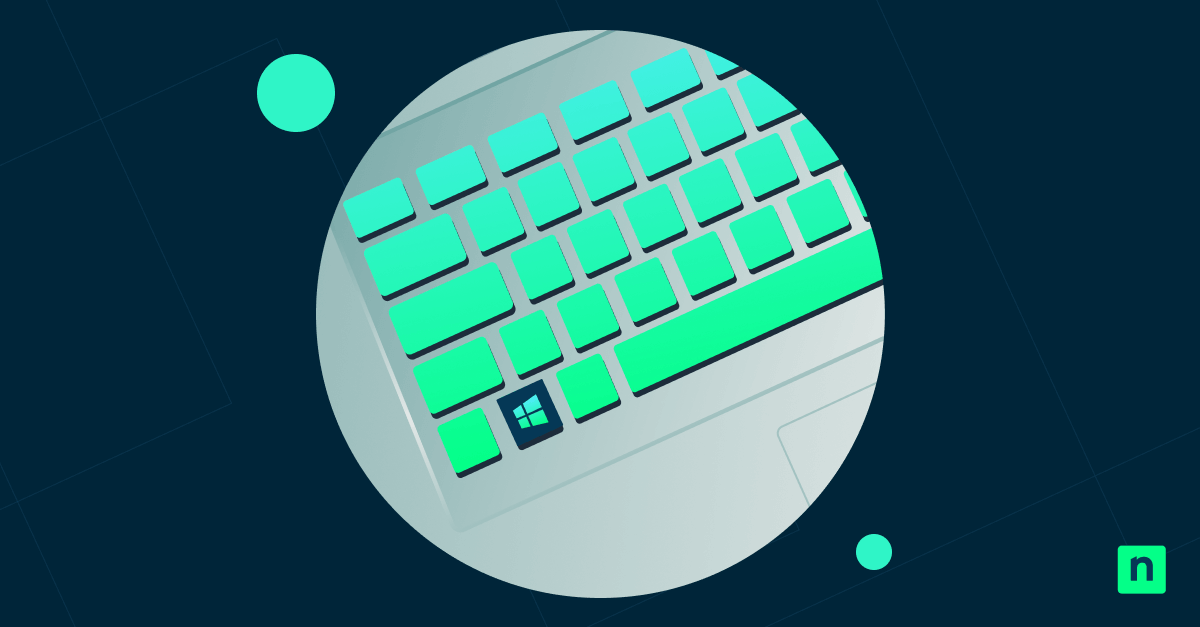When you go to drive properties in Windows 10, a dialog appears with tabs like General, Tools, and Hardware, with each one packed with vital utilities.
The General tab lets you rename drives or check storage space. The Tools tab offers disk error scans and optimization. The Hardware tab reveals connected devices and drivers. But what if these tabs vanish, or you need to restrict them to prevent accidental changes?
Controlling these tabs ensures stability and security for workplaces enforcing compliance or gamers locking down settings. In this step-by-step guide, we’ll walk you through how to add, remove, or restore tabs in the drive properties in Windows 10.
Adding or Removing the General, Tools, and Hardware Tabs in Drive Properties
To make sure that you can fully utilize the methods below, ensure you have administrator access to the Local Group Policy and Registry Editors. This will grant you much more control over the tools needed to customize these tabs in Windows 10.
Method 1: Using the Registry Editor
With the Registry Editor, you will have more targeted control over specific tabs in Windows 10’s drive properties dialog. Here’s how you can hide specific tabs using this tool:
⚠️ WARNING: Before we proceed with this method, it is best that you back up your Registry before making any changes, as incorrect edits can destabilize your system (learn more in How to Back Up and Restore the Windows Registry).
Removing the tabs using Registry Editor
- Open the Registry Editor.
- Press Win + R to open Run.
- Type regedit, then press Enter to open the Registry Editor.
- Click Yes if prompted by User Account Control (UAC).
- Navigate to the registry key.
- In the Registry Editor, go to this key:
HKEY_CLASSES_ROOT\Drive\shellex\PropertySheetHandlers.
- In the Registry Editor, go to this key:
- Find the subkey.
- Look for the subkey {5F5295E0-429F-1069-A2E2-08002B30309D} under PropertySheetHandlers.
- Delete the subkey.
- Right-click on the {5F5295E0-429F-1069-A2E2-08002B30309D} subkey, then select Delete.
- Click Yes to confirm deletion.
Adding the tabs using Registry Editor
- Open the Registry Editor.
- Press Win + R to open Run.
- Type regedit, then press Enter to open the Registry Editor.
- Click Yes if prompted by User Account Control (UAC).
- Add or create the key.
- Go to this address key:
HKEY_CLASSES_ROOT\Drive\shellex\PropertySheetHandlers - Right-click the key, select New > Key, then name the new subkey (if it doesn’t exist):
{5F5295E0-429F-1069-A2E2-08002B30309D}
- Go to this address key:
- Delete the policy removing the tabs.
- Delete NoHardwareTab value (if it exists) in these locations:
- HKEY_CURRENT_USER\Software\Microsoft\Windows\CurrentVersion\Policies\Explorer
- HKEY_LOCAL_MACHINE\SOFTWARE\Microsoft\Windows\CurrentVersion\Policies\Explorer
- Delete NoHardwareTab value (if it exists) in these locations:
Method 2: Using Local Group Policy Editor
The Local Group Policy Editor offers a straightforward way to restrict access to drive properties in Windows 10. However, this approach can only remove the Hardware tab. As for the General and Tools tab, use the Registry Editor (see Method 1).
- Launch the Group Policy Editor.
- Press Win + R to open Run.
- Type gpedit.msc, then press Enter to open Local Group Policy Editor.
- Navigate to the policy path.
Go to User Configuration > Administrative Templates > Windows Components > File Explorer. - Configure the drive restrictions.
- Look for the Remove Hardware tab policy, then double-click.
- To remove the tab: Select Enabled.
- To restore the tab: Select Disabled or Not Configured.
- Look for the Remove Hardware tab policy, then double-click.
- Save changes.
- Click Apply > OK to save changes.
The results should show that the drive properties dialog has now hidden all tabs for selected drives. To target specific drivers and not all of them, do the following method.
What removing the tab affects
Removing tabs from the drive properties in the Windows 10 dialog limits access to specific tools and information. Below, we break down what you lose when hiding General, Tools, or Hardware tabs and how it impacts workflows for admins, gamers, or everyday users.
General tab restrictions
If you’ve removed the General tab, you’ll lose:
- Drive renaming: You won’t be able to modify drive names, such as changing the label of Local Disk to Work Files.
- Storage insights: No visibility into used or free space.
- Icon customization: You can’t change the drive’s icon via the Customize button.
Tools tab restrictions
Hiding the Tools tab removes:
- Error checking (CHKDSK): No quick fixes for file system errors or bad sectors.
- Optimize/Defragment: Disables disk optimization, which is critical for HDD performance.
- Backup options: Blocks your access to File History or legacy backup tools.
Hardware tab restrictions
When you remove the Hardware tab, you’ll lose:
- Device details: You can’t view connected storage hardware like the SSD model or the USB drive manufacturer.
- Driver management: No access to Properties or Driver Updates for disks.
NOTE: Other tabs, like Sharing, Security, or Previous Versions, will remain accessible unless you specifically disable them.
Quick-Start Guide
NinjaOne offers several useful Windows scripts that might be relevant to system configuration.
Here are some potentially helpful scripts:
1. System Configuration Scripts:
– Set Removable Storage Access: Allows disabling or enabling write, read, and execute access to removable storage devices
– Update Group Policy (gpupdate): Initiates a group policy update
– Set UAC Settings: Configures User Account Control settings
– Set Custom Field if Path Exists: Can update a custom field based on whether a specific path exists
2. Device Management Scripts:
– Modify File Permissions: Can modify user permissions for files and folders
– Modify Users Group Membership: Adds or removes users from groups
– Rename Computer: Renames domain-joined or non-domain-joined machines
3. Advanced Configuration Scripts:
– Set UPNP Service Startup Type: Sets the startup type for UPnP Device Host service
– Set the LM Compatibility Level: Configures authentication responses
Frequently Asked Questions (FAQ)
Does this block access to the drive itself?
No. The drive remains fully accessible in File Explorer. Only specific tabs you’ve customized in the Properties dialog are hidden. You can still view, copy, or delete files as usual.
Can I apply this setting only to specific drives?
Not directly. Policies like No Hardware tab or Group Policy restrictions apply to all fixed drives (e.g., C: D:). For example, if you hide the Hardware tab, it disappears for every local disk. Third-party tools or advanced scripting may be required to target specific drives.
Can this be reversed?
Yes.
- To restore tabs in Registry: Create the subkey: {5F5295E0-429F-1069-A2E2-08002B30309D} (see Method 1).
- To restore the Hardware tab in Group Policy: Select the Disabled or Not Configured configuration in the Remove Hardware tab policy (see Method 2).
Will this affect removable drives?
No. These tweaks target local/fixed drives (e.g., SSDs, HDDs). Removable drives (USB sticks, external disks) retain full access to their properties tabs unless modified separately.
Troubleshooting Drive Properties tab issues
Let’s tackle common problems and solutions for customizing the drive properties in Windows 10, whether you’re restoring a missing General tab or forcing Group Policy updates.
Issue: Tabs still appear after applying changes
It is possible that a couple of steps were missed when removing the tabs. Do these action steps to fix this issue:
- Restart your system: Registry or Group Policy edits often need a full reboot to apply changes.
- Verify the registry path: Make sure that when you edited the Registry, it is in the correct key:
HKEY_LOCAL_ROOT\Drive\shellex\PropertySheetHandlers
- Check for conflicts: Third-party optimization tools or existing policies might override your settings.
Issue: Policy configurations are not applied in Group Policy
If configurations made in Group Policy are not working, here are a couple of ways you can resolve this:
- Force a policy update:
- Press Win + R, then type cmd to open Command Prompt.
- Run this command:
gpupdate /force - Restart your PC.
Learn more in GPUpdate: How to Force a Group Policy Update Remotely.
- Check RSoP (Resultant Set of Policy):
- Open Command Prompt (Follow the previous steps above).
- Run the command rsop.msc to identify conflicting policies.
Issue: Registry entry is missing or ineffective
If you can’t find the Registry entry, then you’ll need to create the subkey. Here’s how you can do it (you can also follow the steps in Method 2 instead):
- Create the subkey.
- Go to this address key:
HKEY_CLASSES_ROOT\Drive\shellex\PropertySheetHandlers - Right-click the key, select New > Key, then name the new subkey (if it doesn’t exist):
{5F5295E0-429F-1069-A2E2-08002B30309D}
- Go to this address key:
- Delete the policy removing the tabs.
- Delete NoHardwareTab value (if it exists) in these locations:
- HKEY_CURRENT_USER\Software\Microsoft\Windows\CurrentVersion\Policies\Explorer
- HKEY_LOCAL_MACHINE\SOFTWARE\Microsoft\Windows\CurrentVersion\Policies\Explorer
- Delete NoHardwareTab value (if it exists) in these locations:
Optimize control with Drive Properties in Windows 10
Customizing the drive properties in the Windows 10 dialog by hiding tabs like General, Tools, or Hardware empowers administrators to balance accessibility and security. Restricting advanced settings prevents accidental misconfigurations while keeping everyday tasks like file access intact.
For broad restrictions, the Group Policy Editor simplifies enforcement; for precision, the Registry Editor offers granular control. Best of all, these changes are reversible. Restore tabs anytime by reverting policies or registry values, ensuring flexibility as needs evolve.
By mastering these tweaks, IT pros, gamers, or power users can tailor Windows 10 to their environment without sacrificing stability.








